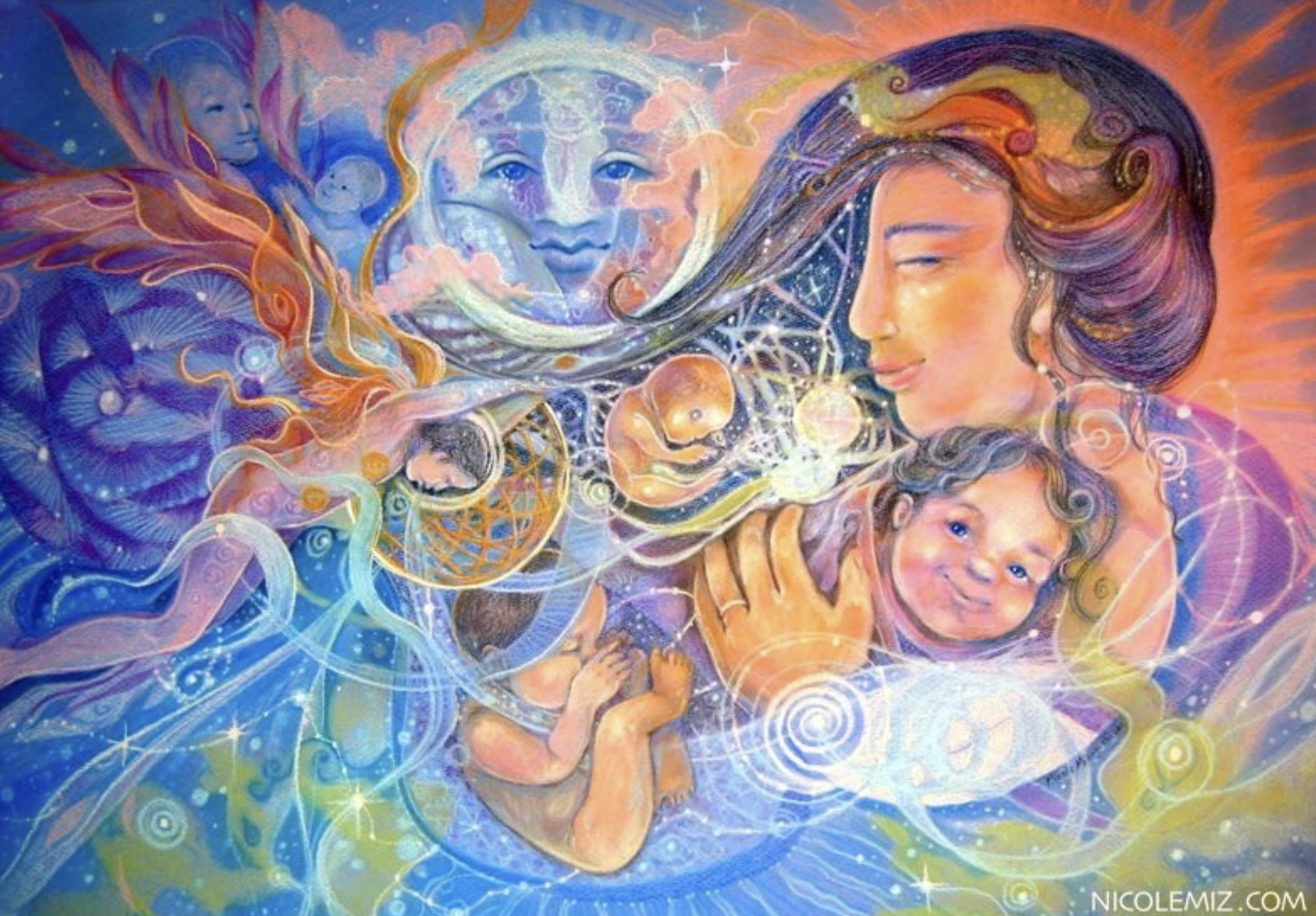
The Family Field model is a way of looking at connections between our own and our family members’ past experiences and how they affect the present. The model is based on scientific research into electromagnetic and morphogenetic fields, as well as epigenetics. In order to understand the Family Field, we first need to know what a field is. A field is a sphere of influence, usually invisible, that surrounds living things. For example, the earth has an electromagnetic field around it, as do our bodies. Before we grow a limb in utero, there is a field that shapes how it will grow. These kinds of fields are called morphogenetic fields, ones that shape embryos. Morphogenetic fields were widely accepted and used in the first decades of the 20th century by embryologists trying to understand how tissues differentiate to form complex structures like limbs. Today, biologist Rupert Sheldrake talks about how our own body’s field interrelates with those of people who have come before us. He calls this morphic resonance. The theory of morphic resonance says that physical traits and behaviours of our ancestors will have an influence on how our own traits and behaviours develop. The ancestors who are closest to us, like our parents, exert more influence over us than those more distant.
So how do these fields affect our pre-birth and birth experiences? Picture any kind of field as an invisible and flexible envelope. The envelope is made up of many variables, including the shape of your parents’ and grandparents’ envelopes; the quality of the air, food, and water around your mother before and while she was conceiving you; the quality of the relationship between your parents; their motivations for bringing you into the world; and the existing cultural climate at the time. Then you come into being with your own envelope, having your own influence on its shape.
The concept of epigenetics, which literally means “upon the genes,” is a new way of perceiving what attributes and traits we inherit from our ancestors. Up until only fifteen years ago, traits were thought to come exclusively from genetic inheritance. This meant that people were fascinated with genetic profile and less interested in how the environment of the body shapes organs and therefore people. It’s now known that the genes and the environment work together and both are necessary and yet insufficient on their own to create the conditions for development and growth. We come into the world with more genes than we will ever express, and then the environment — which is to say, the world surrounding our family, and our family dynamics — determines which genes turn on and which ones don’t. As a result, we appear between the conditions of “nature” and “nurture.”
The Family Field model builds on the ideas of morphic resonance and epigenetics to create a lens through which to understand and decode what babies are telling us about the effect of the past on the present. Babies’ movements and gestures, and even their unique times of inconsolability, can point out difficulties they experienced during their birth and gestation, and difficulties people in their families experienced before them. For this reason, the Family Field model holds the possibility for healing across space and time. Every new child brings an opportunity to address these objects.
For example, it’s common for grandparents or great-grandparents to have come from another country, one in which their family may have lived for several generations or even centuries. The grief they felt at leaving their friends and family, culture, language, and even religion was rarely given the attention it deserved and is still rarely spoken of. You can imagine that arriving on new shores and attempting to assimilate into a new culture were very disruptive, disorienting, and frightening experiences. There may have been difficult travel as they moved from one place to another, and they could have experienced sickness, disease, deaths, rapes, and other horrendous circumstances. Many people have made such moves many times throughout history — whether it was to explore; to escape persecution, disease, or famine; or to pursue new opportunities — and most of them unconsciously brought forward the effects of those traumas (for example, grief, fear, uncertainty), letting them stack up, like plaque, on the bodies and health, of later generations.
I’ll use the term “Objects in the Field” to describe the accumulation of specific moments or events that made an indelible impression on parents, or ancestors, and are still resonating in your family and our society today. Objects in the Field are distinct from imprints as they are transmitted through history in families and cultures and are therefore cumulative. Imprints are overwhelming circumstances from an individual’s life. If they are not healed, they can add to Objects in the Field.
I call them “Objects” because when we look at a map of collective imprints across a family’s lineage, the consistently ungrieved event, and its consequences on later generations, creates a connecting thread between people in that lineage and literally forms a shape or an object on a family map (see Figures 1 to 8). Examples would be the grief never grieved for those people involved in the massive Irish migration during the potato famine; the unacknowledged grief, and the lack of accountability from the Turks, for the deaths of millions of Armenians at the hands of the Ottoman Empire; or the unexpressed grief and lack of accountability for the thousands of women who were forced into organized sex rings in war-torn Yugoslavia. Many of these tragedies and injustices have happened throughout history and are still happening today. When these large-scale cultural events, which radically change the demographic and societal profile of a place, go unseen, publicly unacknowledged, and often, as a consequence, ungrieved, there is a lasting ripple for those living, those to be born, and, I believe, those already dead…
…Part 2 to follow

